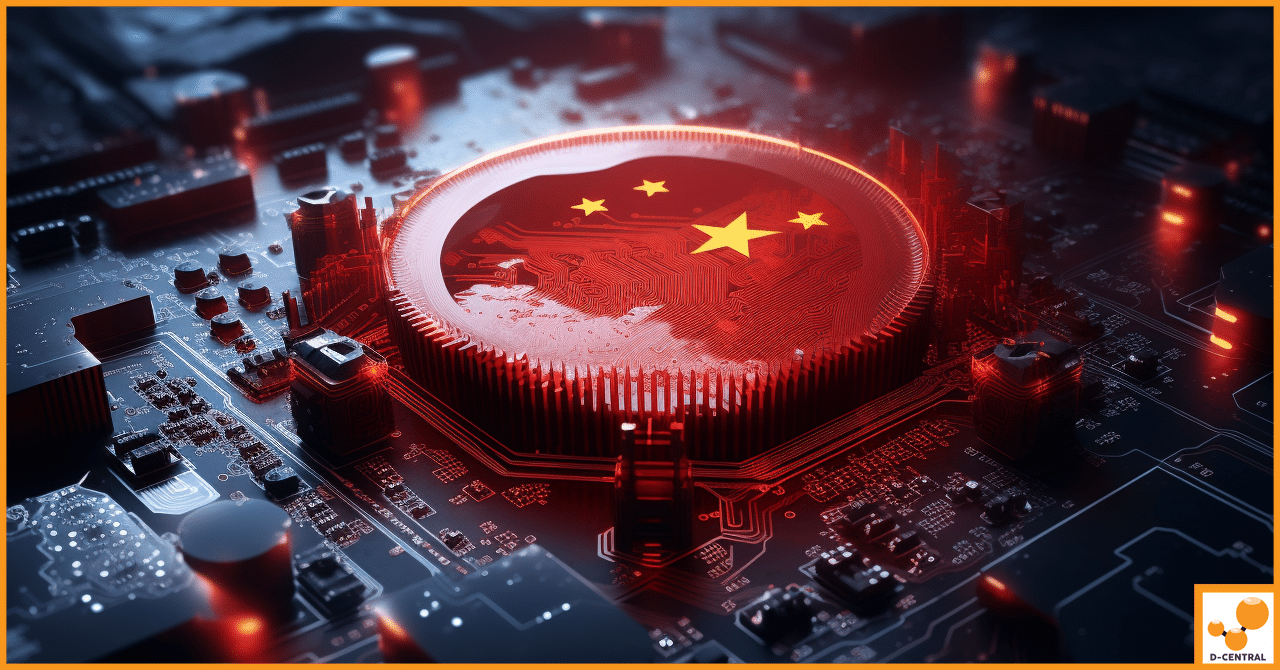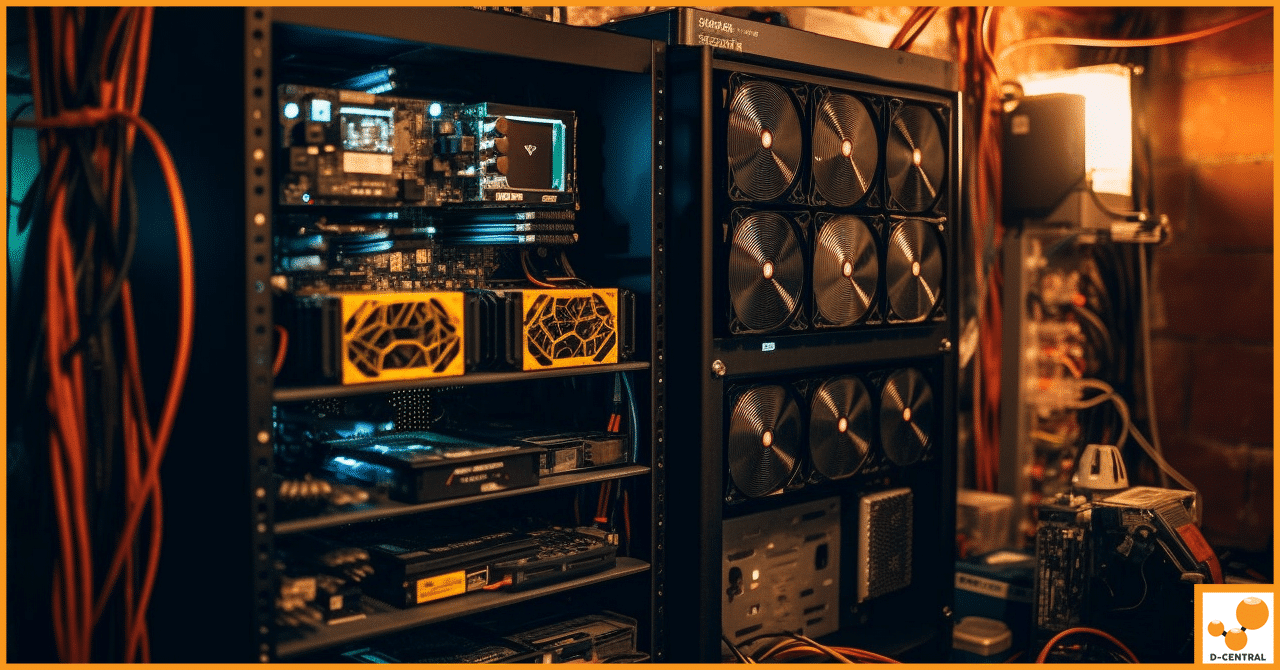
The Ultimate Crossover: Mastering Bitcoin Mining Within Minecraft
Welcome to the fascinating world where the realms of gaming and cryptocurrency converge. At the forefront of this innovative crossroads
4479 Desserte Nord Autoroute 440, Laval, QC H7P 6E2

In the ever-evolving landscape of technology, few developments have garnered as much attention as Huawei’s latest Kirin chip, featured in their new Mate 60 Pro smartphone. This chip is not just another incremental upgrade; it represents a significant leap in chip technology and has the tech community buzzing with speculation. One of the most intriguing questions is whether the Bitcoin mining industry—known for its insatiable demand for high-performance computing—played a role in accelerating the development of this advanced chip.
Equally noteworthy is the role of the Semiconductor Manufacturing International Corporation (SMIC), China’s largest contract chip maker. SMIC’s involvement in the Kirin chip’s development has raised eyebrows, especially considering the foundry’s recent challenges due to U.S. sanctions. Could it be that the surge in Bitcoin mining orders has indirectly aided SMIC, and by extension, expedited Huawei’s Kirin chip development?
This article aims to delve deep into these compelling questions. We will explore the rise of Huawei’s Kirin chip, the pivotal role played by SMIC, and the potential influence of Bitcoin mining on this technological advancement. We’ll also look at the broader implications for China’s tech industry and what this could mean for the future of Bitcoin mining.
Huawei, a name synonymous with innovation in the tech industry, has once again made headlines with the launch of its latest smartphone, the Mate 60 Pro. The star of this new device is undoubtedly the Kirin chip, a powerhouse of computing that promises to redefine performance standards. Designed to meet the demands of modern users, the Kirin chip offers a blend of speed, efficiency, and versatility that sets it apart from its competitors.
The Mate 60 Pro, equipped with this cutting-edge Kirin chip, boasts features that cater to a wide range of needs—from high-definition gaming and augmented reality applications to complex computational tasks often required in fields like Bitcoin mining. In essence, the Kirin chip is not just an incremental upgrade; it’s a technological leap that positions Huawei at the forefront of the smartphone industry.
When it comes to the technological prowess of the Kirin chip, one term you’ll frequently encounter is the “7nm process.” This refers to the size of the transistors on the chip, and it’s a key indicator of the chip’s performance and efficiency. Smaller transistors mean more can fit on a single chip, leading to increased processing power and energy efficiency—a critical factor for applications like Bitcoin mining that require immense computational resources.
But the innovation doesn’t stop at the 7nm process. Huawei, in collaboration with SMIC, has also explored advanced chip production techniques, including the N+1 and N+2 processes. These are incremental improvements over the existing 7nm technology, offering even greater efficiency and performance. Such advancements are not just technical milestones; they represent Huawei’s commitment to pushing the boundaries of what’s possible in chip technology.
The synergy between these advanced processes and the specific needs of applications like Bitcoin mining could be a game-changer, not just for Huawei but for the tech industry at large.
The Semiconductor Manufacturing International Corporation (SMIC) is more than just a footnote in the story of Huawei’s Kirin chip; it’s a key player. As China’s largest contract chip maker, SMIC has been at the forefront of semiconductor technology, providing integrated circuit (IC) manufacturing services that range from older 350 nm to cutting-edge 7 nm process technologies.
SMIC’s role is particularly noteworthy given its list of high-profile customers, which includes not just Huawei but also tech giants like Qualcomm, Broadcom, and Texas Instruments. This positions SMIC as a pivotal entity in the global tech landscape, one that has the capability to influence trends and advancements in chip technology.
While SMIC’s capabilities in chip manufacturing are impressive, the company has not been without its challenges. One of the most significant hurdles has been the U.S. sanctions, which have restricted SMIC’s access to advanced chip-making technologies. Despite these obstacles, the company has shown remarkable resilience and innovation.
The 7nm process, a cornerstone of the Kirin chip’s performance, is a testament to SMIC’s technological prowess. But it’s not just about meeting industry standards; SMIC has been pushing the envelope with its N+1 and N+2 processes. These incremental advancements in chip production have improved yield rates and efficiency, making them highly relevant for high-performance applications like Bitcoin mining.
It’s this blend of capability and adaptability that makes SMIC a crucial part of the Kirin chip’s success story. The foundry’s advancements in chip technology may well have played a role in accelerating the development and deployment of Huawei’s latest masterpiece.
In the realm of high-performance computing, Bitcoin mining stands as one of the most demanding applications. The industry’s insatiable need for computational power has made it a key customer for emerging technologies, including advanced chipsets. Companies like Canaan, Innosilicon, and Miner-VA have been at the forefront of this demand, seeking the most efficient and powerful solutions for their mining operations.
These companies were among the early customers of SMIC’s N+1 process technology, helping the foundry improve its yield rates and chip performance. Their involvement serves as a testament to the Bitcoin mining industry’s influence on technological advancements. By serving as early adopters, these companies not only benefit from cutting-edge technology but also contribute to its refinement and development.
The connection between Bitcoin mining and Huawei’s Kirin chip may not be immediately obvious, but a closer look reveals intriguing possibilities. The 7nm process technology, a key feature of the Kirin chip, is highly relevant for Bitcoin mining applications that require efficient and powerful computational capabilities.
The surge in wafer orders from Bitcoin mining companies could have been a significant factor in improving SMIC’s yield rates. Better yield rates mean more efficient production processes, which in turn could accelerate the development of advanced chips like Huawei’s Kirin.
This symbiotic relationship between Bitcoin mining and chip development is not just a win-win for both industries; it could be a pivotal factor in the rapid advancements we’re witnessing in chip technology. The influence of Bitcoin mining on wafer orders and yield rates may well have played an indirect yet significant role in expediting the Kirin chip’s journey from the drawing board to the marketplace.
The advancements in Huawei’s Kirin chip and SMIC’s manufacturing capabilities have broader implications beyond just these companies. They signify a shift in China’s tech industry towards greater self-reliance. With the U.S. sanctions acting as a catalyst, China has been pushed to accelerate its efforts in becoming less dependent on Western chip technologies.
The success of the Kirin chip could serve as a blueprint for other Chinese tech companies looking to develop their own advanced chipsets. This move towards self-reliance has the potential to reshape the global tech landscape, reducing China’s dependency on Western technologies and potentially leading to a more diversified, competitive market.
As we’ve explored, the symbiotic relationship between Huawei and the Bitcoin mining industry could be more than just coincidental. The Kirin chip’s advanced features make it highly relevant for Bitcoin mining, and the industry’s demand for high-performance computing could continue to drive advancements in chip technology.
Looking ahead, it’s conceivable that Huawei could venture further into the Bitcoin mining sector, leveraging its chip technology to create specialized mining hardware. Conversely, the Bitcoin mining industry could become a significant customer for Huawei, especially as the demand for more efficient mining rigs continues to grow.
This potential for mutual benefit could pave the way for future collaborations between Huawei and Bitcoin mining companies, setting the stage for further technological innovations that could benefit both sectors.
The development and success of Huawei’s Kirin chip and SMIC’s manufacturing capabilities have not been without their share of controversies and challenges. One of the most significant roadblocks has been the U.S. sanctions imposed on both companies. These sanctions have restricted access to advanced chip-making technologies and have led to a reevaluation of supply chain dependencies.
While the sanctions have been a hurdle, they’ve also acted as a catalyst for innovation. Both Huawei and SMIC have had to adapt and innovate to overcome these challenges, and the Kirin chip stands as a testament to what can be achieved even under restrictive conditions.
Another point of contention is the verifiability of the claims surrounding the influence of Bitcoin mining on the development of the Kirin chip. While there is substantial speculation, concrete evidence is still lacking. This raises questions about the extent to which Bitcoin mining has actually contributed to the chip’s development and whether the relationship is as symbiotic as it appears.
It’s crucial for both the tech and Bitcoin mining communities to approach these claims with a critical eye, demanding empirical evidence to substantiate the narratives that are being constructed.
The story of Huawei’s Kirin chip is a complex tapestry of technological innovation, geopolitical tensions, and industry dynamics. Its development may have been influenced by various factors, from the U.S. sanctions pushing for greater self-reliance to the potential acceleration by Bitcoin mining orders. While the exact details may still be under scrutiny, what’s clear is that the Kirin chip represents a significant milestone in chip technology and has far-reaching implications for both the tech industry and the world of Bitcoin mining.
For those intrigued by the advancements in chip technology and its impact on Bitcoin mining, D-Central Technologies offers a range of services to meet your needs. From consultation and sourcing of mining hardware to comprehensive mining support and outsourcing solutions, we’ve got you covered. Take the next step in your Bitcoin mining journey with D-Central Technologies.
What is Huawei’s new Kirin chip?
The Kirin chip, featured in Huawei’s new Mate 60 Pro smartphone, is a significant advancement in chip technology. It offers a blend of speed, efficiency, and versatility, and its unique features make it suitable for various applications, including Bitcoin mining.
How does the 7nm process enhance the Kirin chip’s performance?
The 7nm process refers to the size of the transistors on the Kirin chip. Smaller transistors mean more can fit on a single chip, leading to increased processing power and energy efficiency, which is crucial for high-demand applications like Bitcoin mining.
What is Semiconductor Manufacturing International Corporation’s (SMIC) contribution to the Kirin chip?
SMIC, China’s largest contract chip maker, played a crucial role in the development of the Kirin chip. They explored advanced chip production techniques, including N+1 and N+2 processes, yielding even greater efficiency and performance.
What effect has Bitcoin mining had on the development of the Kirin chip?
Bitcoin mining, recognized for its need for high-performance computing, may have indirectly influenced the development of the Kirin chip. The surge in wafer orders from Bitcoin mining companies could have improved SMIC’s yield rates, which might have accelerated the development of advanced chips like the Kirin chip by Huawei.
What could be the broader implications of the advancements made by Huawei and SMIC?
The advancements by Huawei and SMIC indicated a shift in China’s tech industry towards greater self-reliance. It could lead to other Chinese tech companies developing their advanced chipsets, potentially reshaping the global tech landscape into a more diversified and competitive market.
What services does D-Central Technologies provide?
D-Central Technologies provides various services related to Bitcoin mining. From consultation and sourcing of mining hardware to comprehensive mining support and outsourcing solutions, D-Central Technologies can cater to various needs in this sector.
DISCLAIMER: D-Central Technologies and its associated content, including this blog, do not serve as financial advisors or official investment advisors. The insights and opinions shared here or by any guests featured in our content are provided purely for informational and educational purposes. Such communications should not be interpreted as financial, investment, legal, tax, or any form of specific advice. We are committed to advancing the knowledge and understanding of Bitcoin and its potential impact on society. However, we urge our community to proceed with caution and informed judgment in all related endeavors.
Related Posts

Welcome to the fascinating world where the realms of gaming and cryptocurrency converge. At the forefront of this innovative crossroads

In the digital age, cryptocurrency has emerged as a golden ticket for tech aficionados, promising potentials of profit and innovation.

In the world of cryptocurrencies and digital currencies, there are two leading names that have captured the attention of investors,